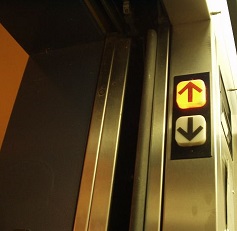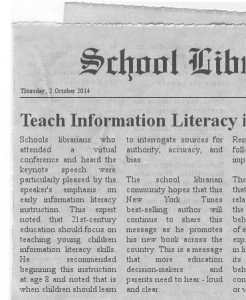 In the past two weeks, I have been engaged in an email exchange with Connie Williams, who retired from her high school librarian position in Petaluma City (CA) Schools and walked into her second dream job as a part-time History Room Librarian at the Petaluma Regional Library. In her current role, she often has the opportunity to work with individual students as they conduct research.
In the past two weeks, I have been engaged in an email exchange with Connie Williams, who retired from her high school librarian position in Petaluma City (CA) Schools and walked into her second dream job as a part-time History Room Librarian at the Petaluma Regional Library. In her current role, she often has the opportunity to work with individual students as they conduct research.
Connie and I began our conversation after my 11/16/20 blog post that referenced Joyce Valenza’s “Enough with the CRAAP; We’re Just Not Doing It Right.” We have been sharing ideas about using Mike Caulfield’s The Four Moves and SIFT process when teaching students to closely examine the reliability of sources.
Last week, I also had the opportunity to engage in a virtual interview with Barbara Stripling, which will be posted to School Library Connection.com (SLC) in the near future. Barb posed questions about how to motivate students to engage in inquiry and how inquiry motivates students to become lifelong learners. (Note: Barb also discusses relevance, autonomy, competence (confidence) in her recent SLC article.)
Central to these conversations has been how to engage students in the hard work of determining the reliability of sources—to dig deep enough to determine the perspective, bias, and authority of texts, free-range web browser-searched texts in particular. This work is essential for student-led inquiry learning.
These conversations prompted me to revisit the work of psychologists Edward Deci and Richard Ryan, which I first learned about in Paul Tough’s book Helping Students Succeed: What Works and Why (2016). Research conducted by Deci and Ryan points to the fact the people (students) are motivated by intrinsic needs for competence, autonomy, and relatedness (personal connection or what we in education call relevance). According to Deci and Ryan, motivation can be sustained when those needs are met.
I believe these three needs are the key to unlocking in our students the motivation to doing the hard work. (This is the order in which Deci and Ryan address these needs.)
Competence
Making sense of any text, also known as comprehension, is work. It requires that readers who want to know the answers to their questions apply a range of strategies. These strategies include self-assessing their background knowledge or building it, posing meaningful questions and questioning the texts they encounter, determining main ideas, perspectives, and bias, drawing inferences, and synthesizing information from multiple sources. It also requires that adults and more proficient peers model what is going on inside their heads when they use these strategies to analyze a text.
K-12 students who have learned and have been guided in practicing reading comprehension strategies have learned to “stop” and chose from a selection of strategies to gain or regain comprehension. The process involved in making sense of text is an essential practice in reading and therefore in inquiry, which often challenges students to learn from texts that are above their proficient reading level. Students who are accustomed to doing this work will have a leg up when they are engaged in inquiry learning.
When students have confidence built from success with difficult texts, they will realize they are empowered with the skills and strategies needed to investigate any question they want to pursue. They will experience competence in making sense of texts. This competence can be a foundation on which they will persist in doing the hard work of analyzing and effectively using unfamiliar texts for their own purposes.
Experiencing competence creates confident learners
who are prepared to take the risks necessary for inquiry learning.
Autonomy
Autonomy is a centerpiece of inquiry learning. From my perspective and in my experience, there are two big buckets of inquiry practices in K-12 schools: guided inquiry based in curriculum standards and open-ended completely student-led inquiry learning. I believe both practices can create the conditions that further motivate students as lifelong learners.
I have the most experience facilitating guided inquiry based in content-area curriculum standards. When educators create opportunities for students to exercise choice within a content-area topic to achieve a standards-based outcome, they have created what Bhabha (1994) called a “third space,” a negotiated space between the curriculum required in school and the student’s outside of school interests and experience. In this context, students have the authority to ask personally meaningful questions within the required curriculum framework (Kuhlthau, Maniotes, and Caspari 2012).
Junior or senior capstone (and some university-level) projects are inquiry examples in which students may assume complete choice over the topic as well as the questions of their inquiry. These projects can pave the way for supporting a lifelong commitment to the process of asking questions and seeking answers, solutions, and uncovering more questions.
Empowered students engaged in inquiry exercise choice and voice.
Relevance
Deci and Ryan use the term “relatedness” which we, in education, call relevance or personal connections. Again, inquiry supports relevance and relevance supports inquiry.
Inquiry learning creates opportunities for student agency. Agency involves students in taking an active role in and ownership over learning. “They may set goals that are relevant and meaningful to their lives, practice autonomy by having voice and choice, and be empowered to share, reflect on, and grow through their learning” (Moreillon 2021, in press).
Exercising agency and experiencing empowerment is motivating.
Plus One: Modeling
To these three, I would add one condition that creates the kind of learning environment that motivates youth to enthusiastically engage in learning and persevere when the going gets tough. I believe that modeling is the most important example educators can offer students. When school librarians and classroom teachers show students that we, as adults, continue to pursue personally meaningful questions in our own lives, students can understand the usefulness of a lifelong inquiry stance toward learning.
Educators who model lifelong learning show students and colleagues that doing the work is worth it. This is not easy at a time when the most common question is what’s the quickest and easiest path to success.
Educator modeling invites students into a supportive inquiry learning environment, a club of inquirers.
Works Cited
Bhabha, Homi K. 1994. The Location of Culture. New York: Routledge.
Deci, Edward L., and Richard M. Ryan. 2018. Self-Determination Theory: Basic Psychological Needs of Motivation, Development, and Wellness. New York: The Guilford Press.
Kuhlthau, Carol C., Leslie K. Maniotes, and Ann K. Caspari. 2012. Guided Inquiry Design: A Framework for Inquiry in Your School. Santa Barbara, CA: Libraries Unlimited.
Moreillon, Judi. Ed. 2021. Core Values in School Librarianship: Responding with Commitment and Courage. Santa Barbara, CA: Libraries Unlimited.
Tough, Paul. 2016. Helping Children Succeed: What Works and Why. Boston: Houghton Mifflin Harcourt.
See also: My 6/5/17 review of Tough’s book How Children Succeed: Grit, Curiosity, and the Hidden Power of Character.






